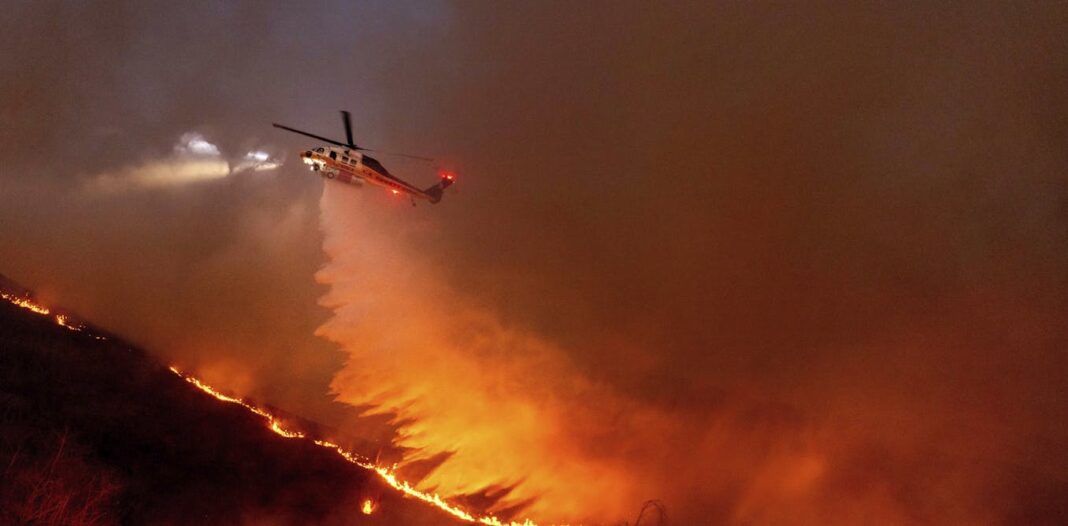Effects of Wildfires on Human Health
Over the past several days, the world has watched on in shock as wildfires have devastated large parts of Los Angeles. Beyond the obvious destruction – to landscapes, homes, businesses, and more – fires at this scale have far-reaching effects on communities. A number of these concern human health.
Direct Consequences
We know fire can harm directly, causing injuries and death. Tragically, the death toll in LA is now at least 24. But wildfires, or bushfires, can also have indirect consequences for human health. In particular, they can promote the incidence and spread of a range of infections.
Indirect Consequences
Wildfires, or bushfires, can also have indirect consequences for human health. In particular, they can promote the incidence and spread of a range of infections. Most people appreciate that fires can cause burns and smoke inhalation, both of which can be life-threatening in their own right. What’s perhaps less well known is that both burns and smoke inhalation can cause acute and chronic changes in the immune system.
Changes in the Immune System
Burns induce profound changes in the immune system. Some parts go into overdrive, becoming too reactive and leading to hyper-inflammation. In the immediate aftermath of serious burns, this can contribute to sepsis and organ failure. Other parts of the immune system appear to be suppressed. Our ability to recognise and fight off bugs can be compromised after sustaining burns. Research shows people who have experienced serious burns have an increased risk of influenza, pneumonia, and other types of respiratory infections for at least the first five years after injury compared to people who haven’t experienced burns.
Wildfire Smoke
Wildfire smoke is a complex mixture containing particulate matter, volatile organic compounds, ozone, toxic gases, and microbes. When people inhale smoke during wildfires, each of these elements can play a role in increasing inflammation in the airways, which can lead to increased susceptibility to respiratory infections and asthma. Research published after Australia’s Black Summer of 2019–20 found a higher risk of COVID infections in areas of New South Wales where bushfires had occurred weeks earlier.
Microbes Travel in Smoky Air
Another opportunity for infection arises from the fire-induced movement of microbes from niches they usually occupy in soils and plants in natural areas, into densely populated urban areas. Recent evidence from forest fires in Utah shows microbes, such as bacteria and fungal spores, can be transported in smoke. These microbes are associated with particles from the source, such as burned vegetation and soil.
Microbes in Smoke
There are thousands of different species of microbes in smoke, many of which are not common in background, non-smoky air. Only a small number of studies on this have been published so far, but researchers have shown the majority of microbes in smoke are still alive and remain alive in smoke long enough to colonise the places where they eventually land. How far specific microbes can be transported remains an open question, but fungi associated with smoke particles have been detected hundreds of miles downwind from wildfires, even weeks after the fire.
So Does This Cause Human Infections?
A subset of these airborne microbes are known to cause infections in humans. Scientists are probing records of human fungal infections in relation to wildfire smoke exposure. In particular, they’re looking at soil-borne infectious agents such as the fungi Merciless coccidioides and Coccidioides posadasii which thrive in dry soils that can be picked up in dust and smoke plumes. These fungi cause valley fever, a lung infection with symptoms that can resemble the flu, across arid western parts of the United States.
Staying Safe
Much remains to be learned about the links between wildfires and infections, and the multiple pathways by which wildfires can increase the risk of certain infections. There’s also a risk people gathering together after a disaster like this, such as in potentially overcrowded shelters, can increase the transmission of infections. We’ve seen this happen after previous natural disasters.
Conclusion
Wildfires have far-reaching effects on human health, including both direct and indirect consequences. Public health responses to wildfires should encompass infection prevention (such as through the provision of effective masks) and surveillance to enable early detection and effective management of any outbreaks.
Frequently Asked Questions
Q: What are the direct consequences of wildfires on human health?
A: Wildfires can cause burns and smoke inhalation, both of which can be life-threatening in their own right.
Q: What are the indirect consequences of wildfires on human health?
A: Wildfires can promote the incidence and spread of a range of infections.
Q: How can wildfires increase the risk of infection?
A: Wildfires can cause changes in the immune system, and microbes can be transported in smoke.
Q: Can wildfires cause specific types of infections?
A: Yes, research has shown a link between wildfire smoke exposure and an increased risk of valley fever and other types of respiratory infections.
Q: What can be done to prevent the spread of infections during wildfires?
A: Public health responses should encompass infection prevention (such as through the provision of effective masks) and surveillance to enable early detection and effective management of any outbreaks.





